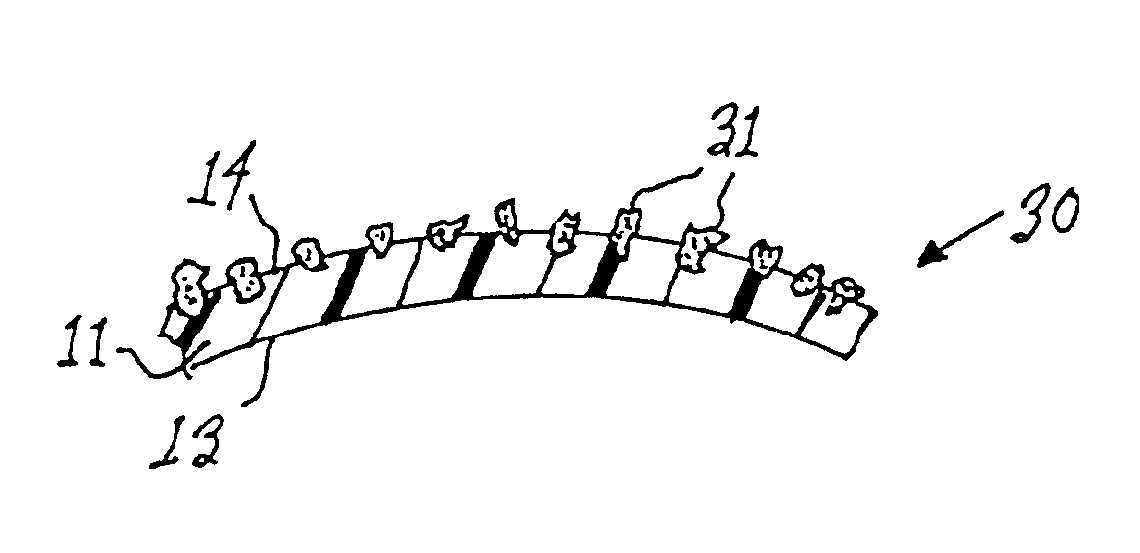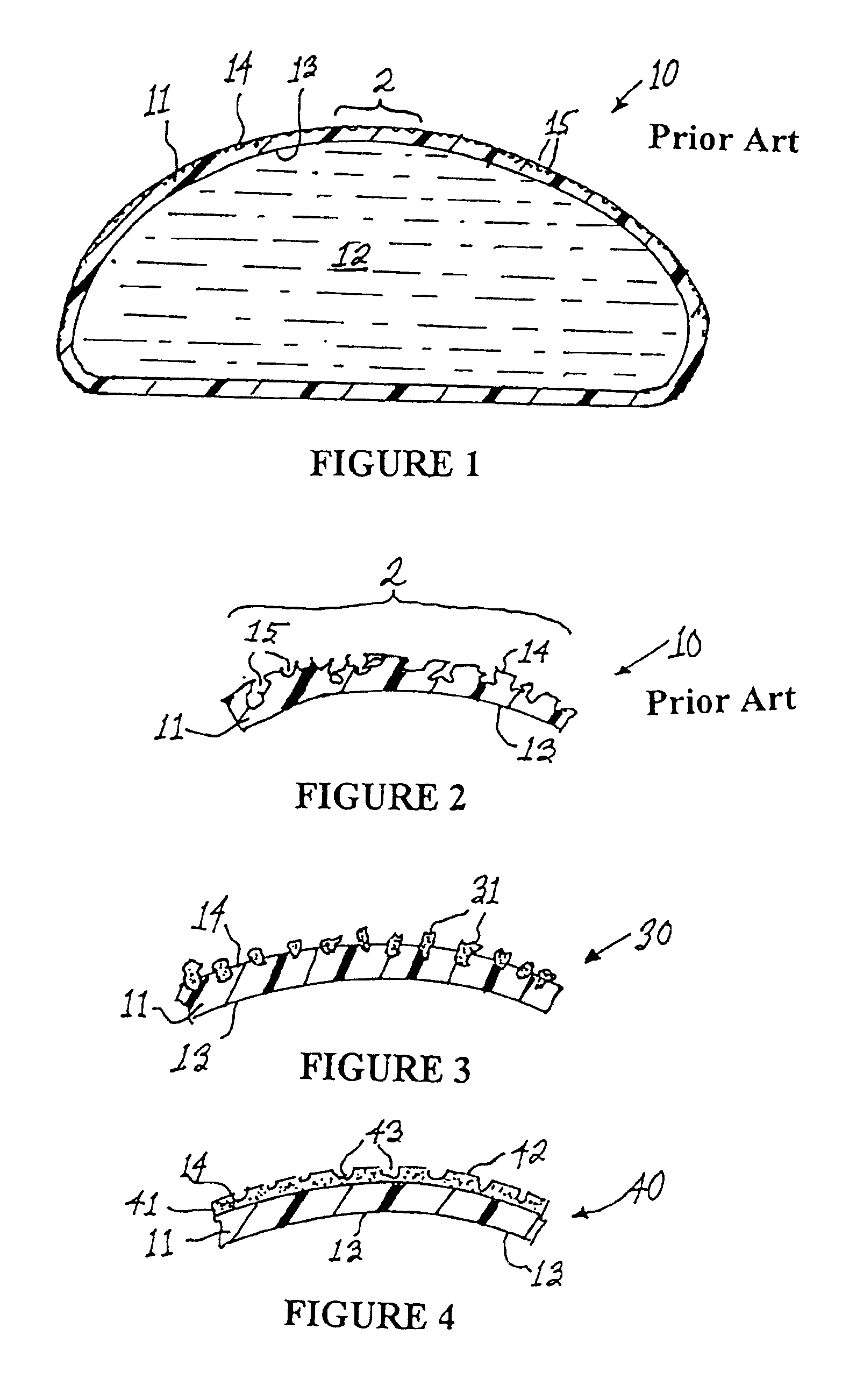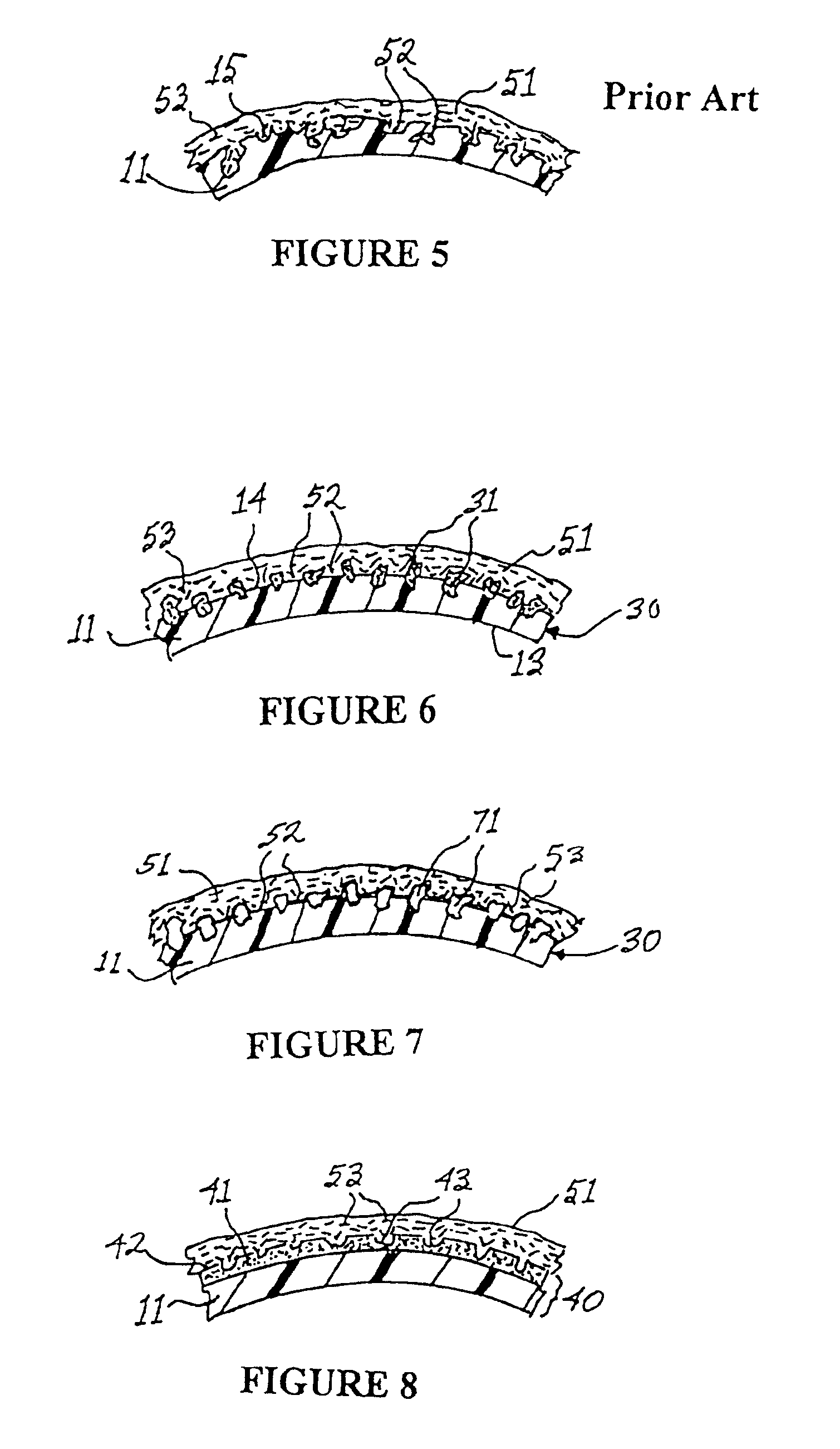Medical implant having bioabsorbable textured surface
a medical implant and textured surface technology, applied in the field of medical implants, can solve the problems of structural failure, fluid-filled medical implants presenting a smooth outer surface to surrounding tissue, and generalized undesirable spherical contractur
- Summary
- Abstract
- Description
- Claims
- Application Information
AI Technical Summary
Problems solved by technology
Method used
Image
Examples
Embodiment Construction
[0022]With reference to FIG. 1, a medical implant in accordance with the prior art is shown in cross-sectional view at numeral 10. The implant 10 comprises a (normally extensible) silicone shell 11 containing a fluid 12 such as saline or silicone gel. The elastomeric shell 11 has an inner surface 13 and an outer surface 14. The outer surface 14 of the shell 11 is characterized by a plurality of pores 15 disposed in the outermost portion of the shell 11. The pores 15, which are shown in greater detail in FIG. 2, are dimensioned to permit the passage of fibroblasts thereinto. The pores 15, in accordance with textured outer surfaces 14 on many prior art implants, are preferably in the range of 0.1-0.5 mm in diameter and open celled in structure. The size of the pores is important because capsular ingrowth requires the migration of fibroblast cells into the pores to facilitate deposition of connective tissue within the pores. Such connective tissue, deposited within the pores, is integr...
PUM
 Login to View More
Login to View More Abstract
Description
Claims
Application Information
 Login to View More
Login to View More - R&D
- Intellectual Property
- Life Sciences
- Materials
- Tech Scout
- Unparalleled Data Quality
- Higher Quality Content
- 60% Fewer Hallucinations
Browse by: Latest US Patents, China's latest patents, Technical Efficacy Thesaurus, Application Domain, Technology Topic, Popular Technical Reports.
© 2025 PatSnap. All rights reserved.Legal|Privacy policy|Modern Slavery Act Transparency Statement|Sitemap|About US| Contact US: help@patsnap.com



